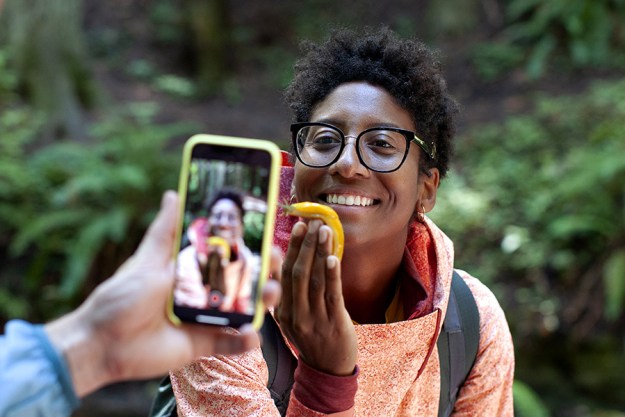 In addition to issuing some new, very user-focused features and iterations, like Facebook Home and more versatile status update options, the social network is also making big moves when it comes to advertising. The latest from Facebook is Partner Categories, which gives marketers deeper insight into consumer behavior – offline consumer behavior, to be specific.
In addition to issuing some new, very user-focused features and iterations, like Facebook Home and more versatile status update options, the social network is also making big moves when it comes to advertising. The latest from Facebook is Partner Categories, which gives marketers deeper insight into consumer behavior – offline consumer behavior, to be specific.
“For example, a local car dealership can now show ads to people who are likely in the market for a new car who live near their dealership,” Facebook explains. “To date, advertisers have been able to show ads to people based on their expressed interest on Facebook. Now with partner categories, they can also show ads to people on Facebook based on the products and brands they buy across both the desktop and mobile.”
That last part makes it seem like cookies are tracing are browser activity, including online shopping. But Facebook goes on:
“In addition, partner categories works with other Facebook targeting options, so advertisers can further refine their campaigns to reach only the right people. Ads that are well targeted benefit the advertisers who run them by driving higher return on investment and are a better experience for people who see more relevant ads.”
“Other Facebook targeting options” is referring to what partners like Acxiom, Datalogix, and Epsilon (which, as we’ve explained, are all being investigated by the Federal Trade Commission) are helping Facebook accomplish. In addition to being crucial to Facebook’s targeted ads program that uses cookies to trace what we’re doing online outside of the social network, these companies are also helping Facebook find data about our offline, real-life activities – namely, what we’re buying and where we’re buying it. Suffice it to say that advertisers will know much more than what you’ve “liked” – much, much more. Previously, advertisers could target based on location, gender, your Likes, basically information you’ve offered up to Facebook. But now there are categories and subcategories (over 500 in total) that pull in interests, behaviors, and habits you’ve expressed outside of Facebook.
Simply put, what the data aggregators do is help Facebook create these partner categories, which are “unique groups” that can be matched up with Facebook users. For instance, the data aggregators have information on consumers who buy children’s cereals (or want to buy children’s cereals), and this can be matched against Facebook users, so that advertisers know which Facebook users actually buy children’s cereals – information created outside of Facebook but now being leveraged inside of it.

The new Partner Categories product also allows advertisers to get insanely specific and cross-target users; i.e., they will be able to pinpoint who buys children’s cereals and is a fan of the San Francisco 49ers and lives in Texas and is between the ages of 18-35. You get the idea.
“There is a tremendous opportunity for marketers to leverage offline data to reach their customers and prospective customers where and when they are deeply engaged,” says Epilon’s EVP of Online Solutions Eric Stein in a statement. “With the right data and insights, marketers can build engagement and share valuable, relevant offers and information. We’ve worked across multiple brands and have used the robust targeting of our partnership to drive a greater than 30 percent average ROI so far … Epsilon understands data and how to make insights actionable to drive meaningful conversations with customers both online and offline. Our partnership with Facebook will help marketers achieve strong results and uncover return on their marketing investment.”
Datalogix also commented on the release, saying its short time working with Facebook has been well spent. “[Since partnering], the companies have jointly invested thousands of man-hours building and deploying a platform that brings together media exposure and offline sales data at unprecedented scale, with privacy built in from the start.”

Essentially, what’s happening is two very massive, valuable databases are merging their powers: Facebook’s social and identity database – created entirely online – is being cross-referenced against Acxiom’s, Datalogix’s, Epsilon’s, and others’ consumer behavior databases – which are driven by a mix of online and offline information. The result is powerful insights into what type of people are buying what type of products.
Of course, if you don’t want to be targeted by online ads within Facebook, there is an opt-out option – but what about your offline, real-life purchases? It gets trickier there, because there is no way to opt-out of using a loyalty card, which is where companies like those listed above get much of their information. Of course, all of this data is hashed and made anonymous, so anyone accessing this product isn’t seeing names and photos, they’re seeing numbers.
Regardless, the result is highly targeted ads, partially built on offline activity, and that might just be crossing from the virtual world into the real one a little too much for some users. Or – it will be exactly what we want; custom targeting is working. With the Custom Audiences targeting tool, which allows advertisers to match lists of consumer data with Facebook users anonymously, users are X-ing out of fewer ads. In fact the rate has dropped 15 percent with this tool, in fact. The relevance argument for personalized, targeting advertising might sound like fluff, but it is real, and it appears there is a pay-off.
